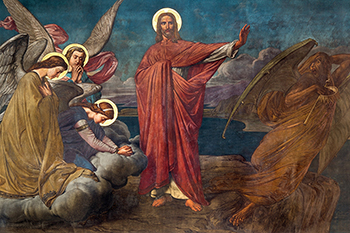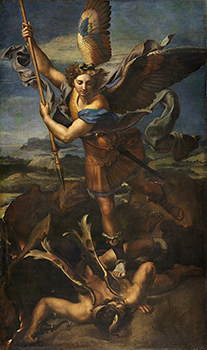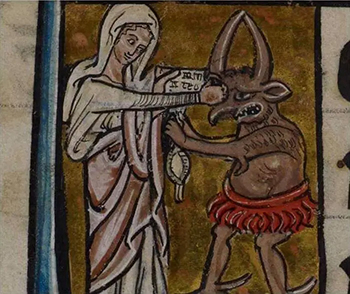From Our Archive
Debie Thomas, Embodied (2021) and Scarred and Hungry (2018).
For Sunday April 14, 2024
Lectionary Readings (Revised Common Lectionary, Year B)
1 John 3:1-7
Luke 24:36b-48
Psalm 4
This Week's Essay
THANK YOU to Michael Fitzpatrick for a six-week series of lectionary essays from Easter to Pentecost. Michael was a regular staff writer for JWJ from 2020 to 2023. He is a U. S. Army veteran and philosopher. He served five years in the Army as a Chaplain's Assistant, which included two deployments to Iraq during 2004-05 and 2006-08. Michael is finishing his PhD at Stanford University.
In recent years, reporting from ProPublica has unveiled that across the United States more than $5 billion of federal assistance money set aside for states to assist impoverished citizens and families has gone unused or unclaimed. Some of the reason for this is that many states have been slowly excluding more and more of those in need from eligibility, despite having no shortage of funds available.
Another reason is simple lack of awareness. A lot of people who need assistance either don’t know there are benefits available to them, or they don’t know how to obtain access to those benefits. Josh Hodges, chief customer officer for the National Council on Aging, has examined elderly folk living in poverty, and he estimates that when unclaimed Medicare benefits and premium assistance is included, a whopping $30 billion in both public and private benefits goes unclaimed every year due to lack of awareness or access.
Social policy failures like these illustrate a couple critical truths of human life: we can’t get help when we don’t know help is available. We also can’t get help when help is withheld.
John’s First Epistle teaches us that God’s policies succeed where human policies fall short. God has not withheld help from us and we access this help by knowing who this Jesus is through whom God helps us.
 |
|
Fresco, St. George Church in Antwerp, Belgium.
|
Before we can receive God’s help, we have to appreciate that we need help in the first place! As Alcoholics Anonymous has taught us, the first step is admitting we have a problem. “Everyone who sins breaks [God’s] law; in fact, sin is lawlessness,” John writes (3.4, NIV unless otherwise noted). God’s creation is disordered; God’s image bearers — that’s us, folks — are disordered. But the Good News, John says, is that “Christ appeared so that he might take away our sins” (v. 5). God is not like those state assistance programs who withhold help from those who need it. Through Jesus, God makes salvation possible for every person!
How did lawlessness get into our hearts and relationships in the first place? Barbara Brown Taylor, in her excellent book Speaking of Sin, recalls a line from the classic film Charade in which Audrey Hepburn’s character turns to Cary Grant’s character and asks, “Why do people lie?” Grant replies, “People lie because they want something and fear that the truth will not get it for them.” Barbara Brown Taylor observes, “If he had been a preacher instead of a movie star, he might have said, ‘People sin because they want something and fear that goodness will not get it for them.’”
In one sense, lawlessness is simply the disconnect we discover between our desires and what is true and good for us. What we feel is good or what we want to believe is not always good or true. According to John, our sinful condition is a reflection of our nature, not simply our willful disobedience. We’re like an addict who insists they can quit anytime they want. No, an addict really can’t, because they are not a creature that has control over their urges. Likewise, we can’t simply imitate Jesus’ good example by willing ourselves into a life free of sin. If we could do that, God would not have needed to send Jesus in the first place!
How exactly does Christ take away our sins? Well, John says, “In him is no sin, and no one who lives in him keeps on sinning. No one who continues to sin has either seen him or known him” (vv. 5–6, emphasis added).
Jesus takes away our sin by taking us into himself, so that we participate in his life. Since his life is free of sin, our lives are free of sin. If our lives are not free of sin, it is because like those who don’t know where to look for needy family benefits, we don’t yet know Christ. John writes, “If you know that Christ is righteous, you know that everyone who does what is right has been born of him” (2.29). We’re born of Christ; that is, we bear Christ’s nature, no longer a sinful nature. This is the “great love the Father has lavished on us,” calling us “children,” so that “all who have this hope in Christ purify themselves, just as he is pure” (3.1, 3).
Knowing Christ is not the same as knowing about Christ. Jesus is not an object of intellectual curiosity, but a living presence who transforms us from being creatures addicted to the desires of this world — “the lust of the flesh, the lust of the eyes, and the pride of life” (2.16) — to being people who love the Father through the Son. For “the world and its desires pass away, but whoever does the will of God lives forever” (v. 17).
 |
|
St. Michael Vanquishing Satan, oil transferred from wood to canvas, Raphael in 1518. |
Unfortunately, there are people who distort God’s message of love. John calls such people “antichrists.” John’s letters are the only place in the Bible this word appears, and it has nothing to do with bizarre theories about the end times. He is not speaking of “the Antichrist,” a non-biblical fabrication of American fundamentalism. These are “antichrists,” in the plural, people who deny the knowledge we need to participate in Christ’s righteousness.
The spirit of antichrist seeks to lead people astray with lies about God and Jesus. John asks, “And who is a liar? Anyone who says that Jesus is not the Christ. Anyone who denies the Father and the Son is an antichrist” (NLT). Being an antichrist would be like telling a single mother with four children that there is nothing the state can do to help her feed her family. A lie about the saving grace people need destroys lives and cuts people off from desperately needed help. That is why John’s words are so strong for those who deny that “your sins have been forgiven on account of his [Jesus’] name” (2.12). For to deny Jesus is to lose the Father, whose forgiveness comes through participation in the Son. Conversely, “whoever acknowledges the Son has the Father” (2.23).
John is writing to protect his fledgling church community from those antichrists who would take their hope from them. He is writing to people who do know Jesus as the Christ, and therefore have access to the salvation that comes through him. John declares, “I write to you, dear children, because … the word of God lives in you, and you have overcome the evil one” (2.14).
Who is this “evil one” we have overcome? Again, Christ’s victory over sin is not simply a matter of us humans trying to do better. It’s not a matter of will, for we have been enslaved by an oppressor. John again warns his flock about antichrists: “Dear children, do not let anyone lead you astray” (3.7). To guide them, John distinguishes between those who do what is right (because they are in Jesus, in whom is no sin), and those who continue in sin. If we do what is right, it is in Christ. But if we do what is sinful, such actions are “of the devil, because the devil has been sinning from the beginning” (v.8).
The ultimate power that seeks to lead us astray is the devil, that primordial source of lawlessness. Those born of God will no longer sin, unlike those who are children of the devil (vv. 9-10). This is not a license for us to go around in our self-righteousness condemning others, or to expect perfection in ourselves. It is simply John’s way of giving a practical, actionable set of guidelines for novice Christians to not be led astray by antichrists. Become people who are born of God, he says, and do not be led astray by those who deny Christ and continue the devil’s work. And in case we have any uncertainty about who might lead us astray, John suggests two tells:
Anyone who does not do what is right is not God’s child, nor is anyone who does not love their brother and sister. (v. 10)
So we ask ourselves, is this person teaching us how to believe, or how to not believe in Christ? Are they loving us as their own siblings? In other words, do those who would teach us testify to “the great love the Father has lavished on us” and do they live that love out towards others? That is John’s line in the sand between the children of God and the children of the devil. His aim is not to condemn people, but to emphatically say, “Don’t be like the devil, who has been sinning from the beginning!”
 |
|
Medieval illuminated manuscript, Mary thumping the Devil.
|
We began with John’s declaration of the Good News that “Christ appeared so that he might take away our sins” (3.5). John now puts the Good News more dramatically: “The Son of God appeared to destroy the devil’s work.” Christ died and was raised so that the devil’s oppression of our souls and our communities might end! Christ died to ransom and set the captives free! Christ died that we addicts to sin might go and sin no more!
We’re in Eastertide, the great 50 days celebrating Christ’s resurrection and appearances. If we know Christ, then we believe in living lives that help destroy the devil’s work. We’ll destroy that devil wherever we see the poor and suffering denied access to resources which might give them life. We’ll destroy that devil wherever we witness people who do not love one another. We’ll destroy that devil wherever we encounter antichrists trying to lure people away from the love of God who has forgiven them of their sins. Get behind us Satan! This is your kingdom no more!
Christ is risen! He is risen indeed!
Note: For a particularly poignant example of destroying the devil's work, see Dan's film review of the documentary Praying the Devil Back to Hell.
Weekly Prayer
William Dunbar (1459-1530)
Done is a Battle on the Dragon Black
Done is a battle on the dragon black,
Our champion Christ has confounded his force;
The gates of hell are broken with a crack,
The sign triumphal raisèd is the cross,
The devils tremble with hideous voice,
The souls are redeemed and to the bliss can go,
Christ with his blood our ransom does endorse:
Surrexit dominus de sepulchro.Beaten is the deadly dragon Lucifer,
The cruel serpent with the mortal sting,
The old sharp tiger with his teeth bared,
Who in wait has lain for us so long,
Thinking to grip us in his claws strong:
The merciful Lord would not that it were so,
He made him for to fail of that prize:
Surrexit dominus de sepulchro.He who for our sake allowed himself to be slain,
And like a lamb in sacrifice was offered,
Is like a lion risen up again,
And like a giant raised himself on high:
Risen is Aurora radiant and bright,
Aloft is gone the glorious Apollo,
The blissful day departed from the night:
Surrexit dominus de sepulchro.The great victor again is risen on high
Who on our behalf to the death was wounded;
The Son that waxed all pale now shimmers bright,
And, darkness cleared, our faith is now refounded.
The knell of mercy from the heav’n is sounded,
The Christians are delivered from their woe,
The Jews and their error are confounded:
Surrexit dominus de sepulchro.The foe is chased, the battle is done,
The prison broken, the jailers fled and banished,
The war is gone, confirmèd is the peace,
The fetters loosed and the dungeon emptied,
The ransom made, the prisoners redeemed,
The field is won, overcome is the foe,
Despoiled of the treasure that he held:
Surrexit dominus de sepulchro.This early sixteenth-century poem by William Dunbar of Scotland — who served as poet in the court of King James IV and was also an ordained Catholic priest — is an imaginative retelling of the extrabiblical episode known as the Harrowing of Hell, wherein Christ descends to the realm of the dead on the eve of his resurrection to free the souls being held captive there by Satan. The Latin refrain translates to “The Lord is risen from the grave.”
The original poem, in Middle Scots, has been rendered in modern English by Victoria Emily Jones, a freelance literature scholar, at her blog Art & Theology. All notes are adapted from her introduction to the poem.
Michael Fitzpatrick cherishes comments and questions via m.c.fitzpatrick@outlook.com
Image credits: (1) Aleteia.org; (2) Wikimedia.org; and (3) MaggyWhitehouse.com.





